Dianthus Needs Replacing After 5-6 Years: Propagate From Cuttings To Keep Them

PERENNIALS > DIANTHUS > PROPAGATION

Elizabeth is a Permaculture Garden Designer, Sustainability Consultant and Professional Writer, working as an advocate for positive change. She graduated from the University of St. Andrews with an MA in English and Philosophy and obtained a Diploma in Applied Permaculture Design from the Permaculture Association.
Reviewed By ROY NICOL

Roy is a Professional Gardener and Horticultural Consultant, specialising in large garden year-round maintenance and garden development. He is an RHS Master of Horticulture and uses his research in the application of no-dig methods in ornamental garden settings. Roy has been a Professional Gardener for more than six years and is a member of the Chartered Institute of Horticulture, Professional Gardener's Guild and Association of Professional Landscapers (Professional Gardener).
Contributions From EMILY CUPIT

Emily is a Gardening Writer, Photographer and Videographer from Derbyshire, UK. She is the Founder of Emily's Green Diary - a community of more than 75,000 people who share in her gardening journey.
IN THIS GUIDE
DIANTHUS GUIDES
Container Growing
Deadheading
Growing From Seed
Propagation
Varieties
Watering
Dianthus is a genus which offers a wide range of beautiful flowers for your garden.
However, they are often only relatively short-lived plants.
After a time, pinks will tend to sprawl and become woody at their base.
| Difficulty | Easy |
| Equipment Required | Knife or secateurs, compost mix, pots, rooting powder (optional) |
| When To Take Cuttings | June – September |
How long they will thrive in your garden will very much depend on which type of Dianthus you are growing, but many may need to be replaced after 5-6 years or so.
This means that if you want to continue growing the Dianthus you love over a longer time, you will need to propagate existing plants to maintain their presence in your growing areas.
“An easy method for propagating Dianthus is to use the layering method,” shares Master Horticulturist Roy Nicol.
“This is where a stem from an existing plant is scored slightly with a knife and pinned down into the surrounding soil or compost.
“After a couple of months, the stem will have rooted and can be cut away and potted up separately.”
Fortunately, it is also pretty easy to propagate a Dianthus that may be nearing the end of its life, or beginning to look a little less attractive by taking cuttings (also known as pipings) from a mature plant.
To grow Dianthus from cuttings:
- Choose a healthy non-flowering shoot and take a cutting around 6cm long, then prepare it for planting.
- Place the cuttings into a pot of moist cutting medium.
- Place a cover over the cuttings and place them on a sunny windowsill.
- Once cuttings have rooted (usually in 4-6 weeks) pot them on into their own separate pots.
- Overwinter in a cool greenhouse or cold frame and plant the cuttings out in the garden the following spring.
Below, we explain this process in a little more depth – read on to understand a little more about the process involved in growing Dianthus from cuttings.
1) Take & Prepare Your Dianthus Cutting
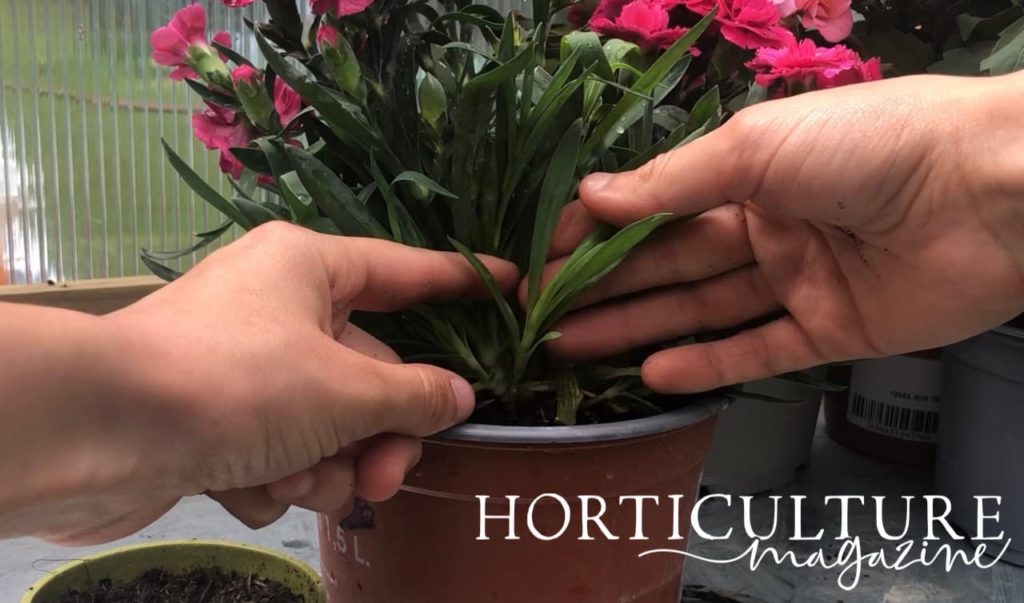
Any time between June and September, examine any mature Dianthus – especially one that you feel may be past its best.
Look for a healthy, non-flowering shoot, and take off a cutting of around 6cm, cutting just below a node, using a clean and sharp gardening knife.
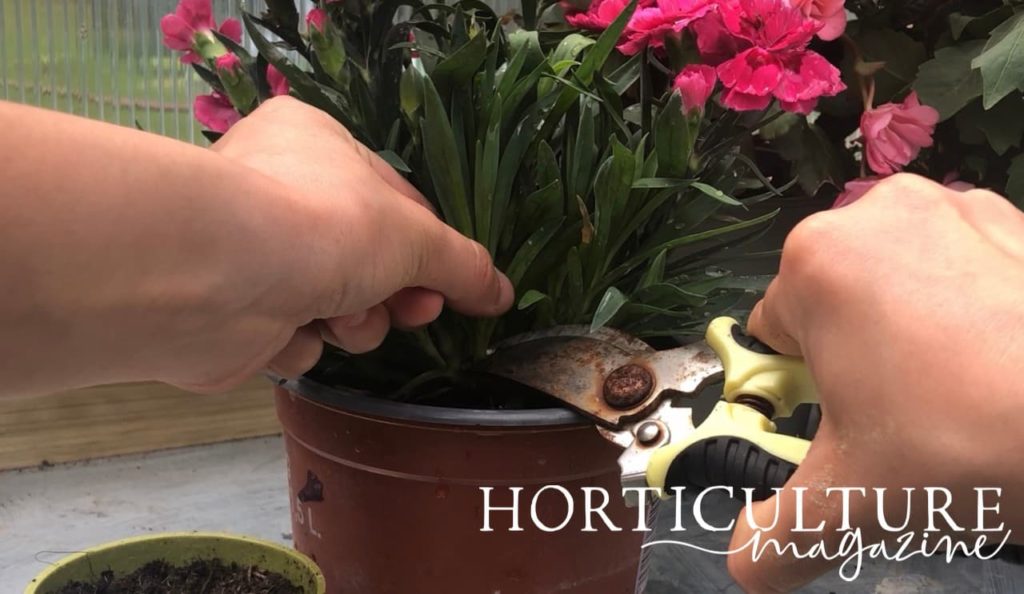
Prepare the cutting by removing the lower leaves.
Optionally, you might also consider dipping the end in rooting powder, which could increase the chances of a cutting rooting successfully.
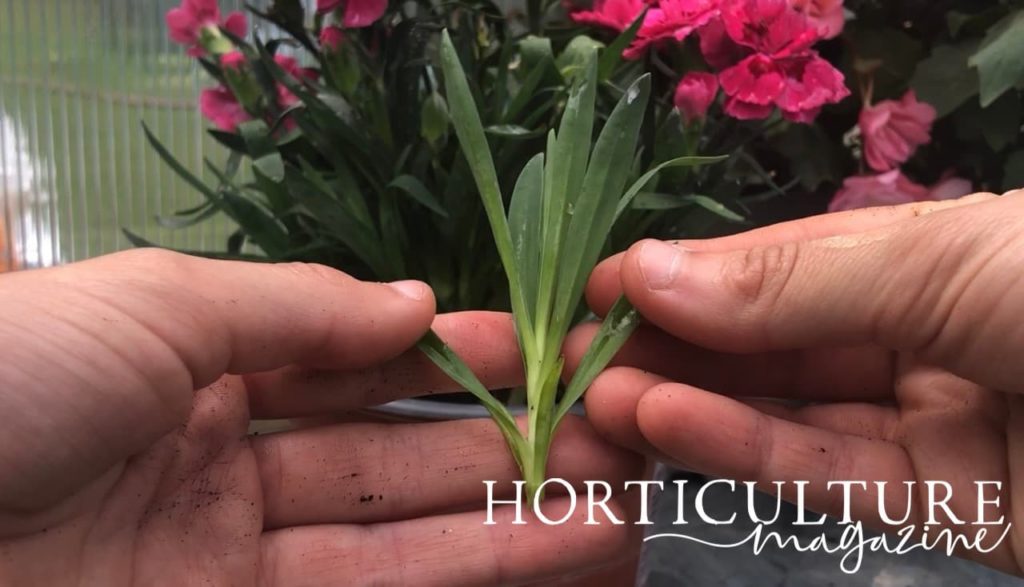
Though this step is not strictly essential and often you will find that the cuttings take perfectly well without this option.
2) Place Cuttings Into A Pot
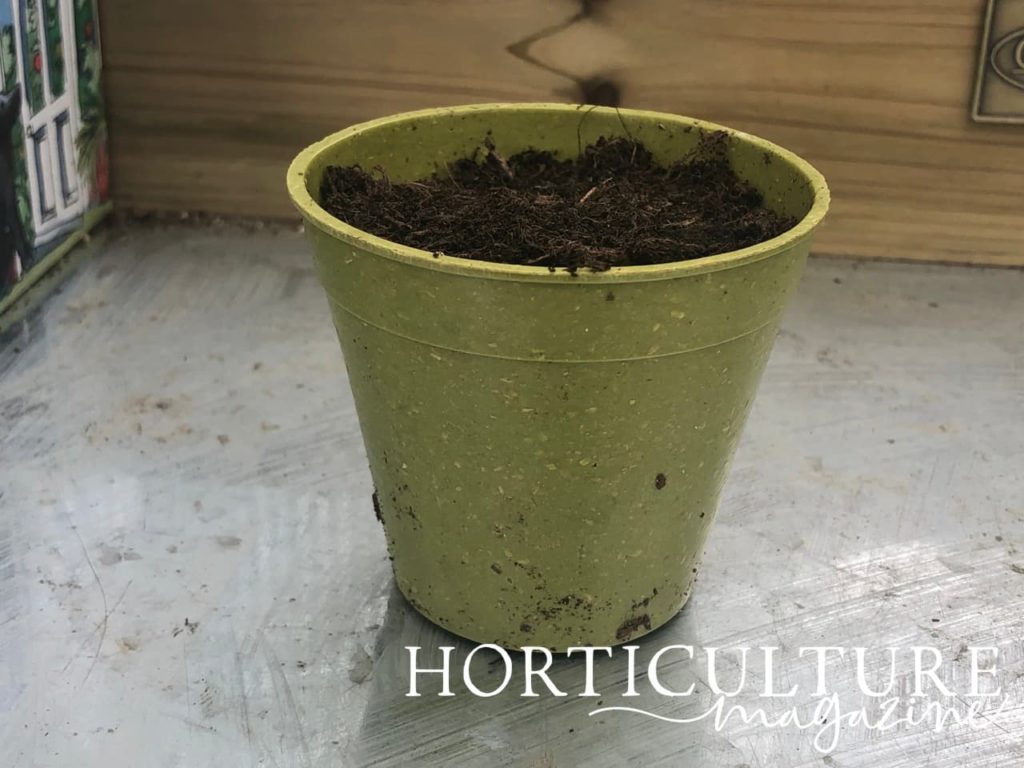
Once you have prepared your cuttings, you should insert them immediately around the edges of a pot filled with a suitable peat-free cutting compost or home-made medium.
Make sure that the medium has been watered before you insert the cuttings, and that it is moist and yet not saturated.
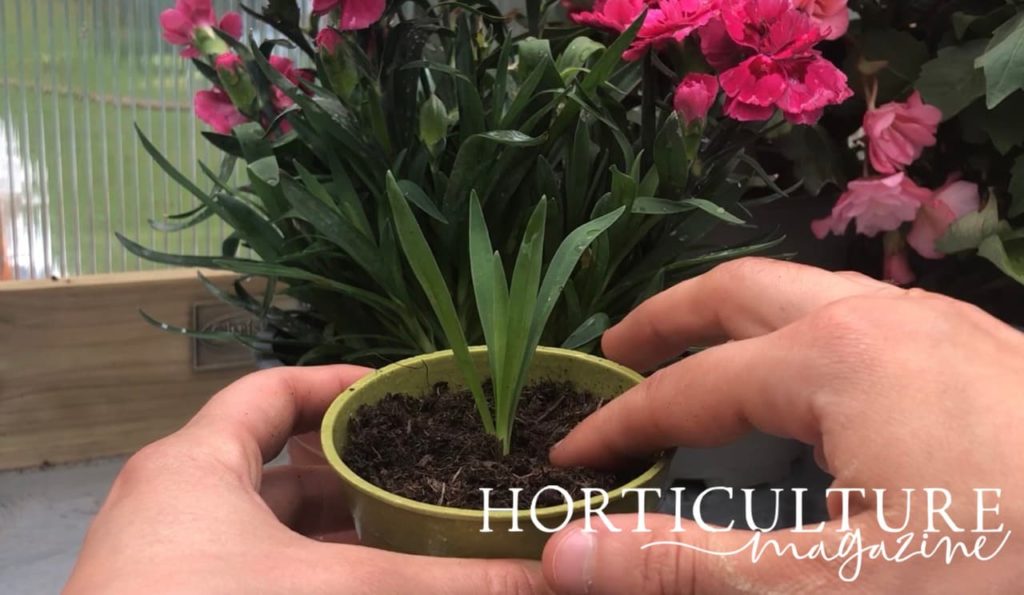
Ensure that water can drain away freely.
3) Cover The Cuttings
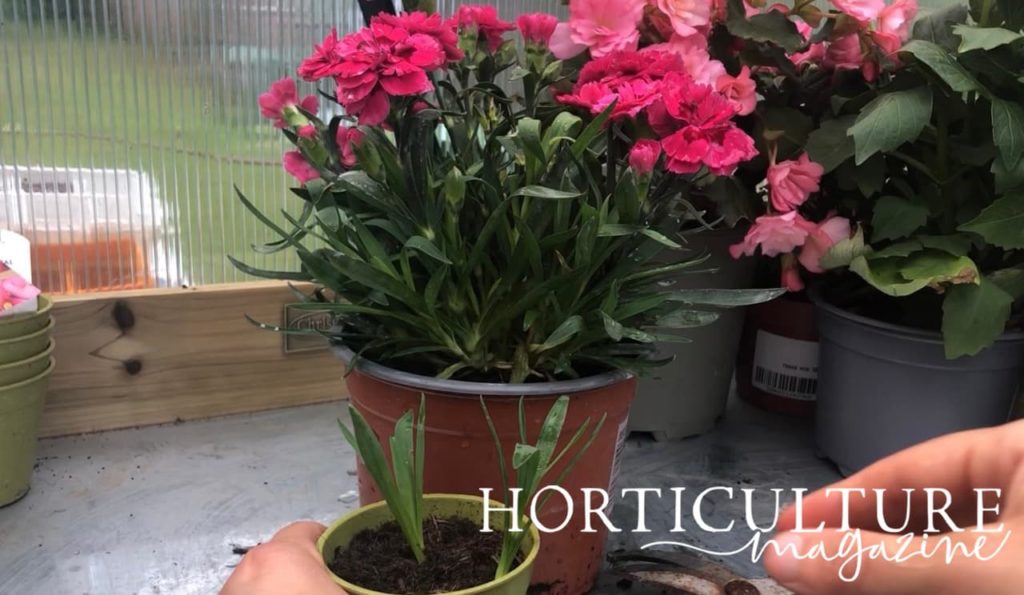
In order to prevent the cuttings from drying out, it is a good idea to over the cuttings over with a propagator lid, or a plastic bag secured with an elastic band around the top of the pot.
The covered cuttings should be placed on a bright windowsill out of direct sun.
4) Wait for Rooting Then Repot

Your cuttings should have rooted within a month to six weeks.
You’ll know when the cuttings have rooted when fresh growth is visible.
5) Overwinter Under Cover
Once the cuttings have rooted well, carefully remove the cuttings from the pot, gently separate them with their own roots and plant them into their own individual pots with a peat-free multipurpose compost.
Water in the cuttings and then place them into a cool greenhouse, polytunnel or cold frame where they will be able to overwinter.
Keep them watered, but take care not to overwater and always allow excess water to drain away.
6) Plant Out In Spring
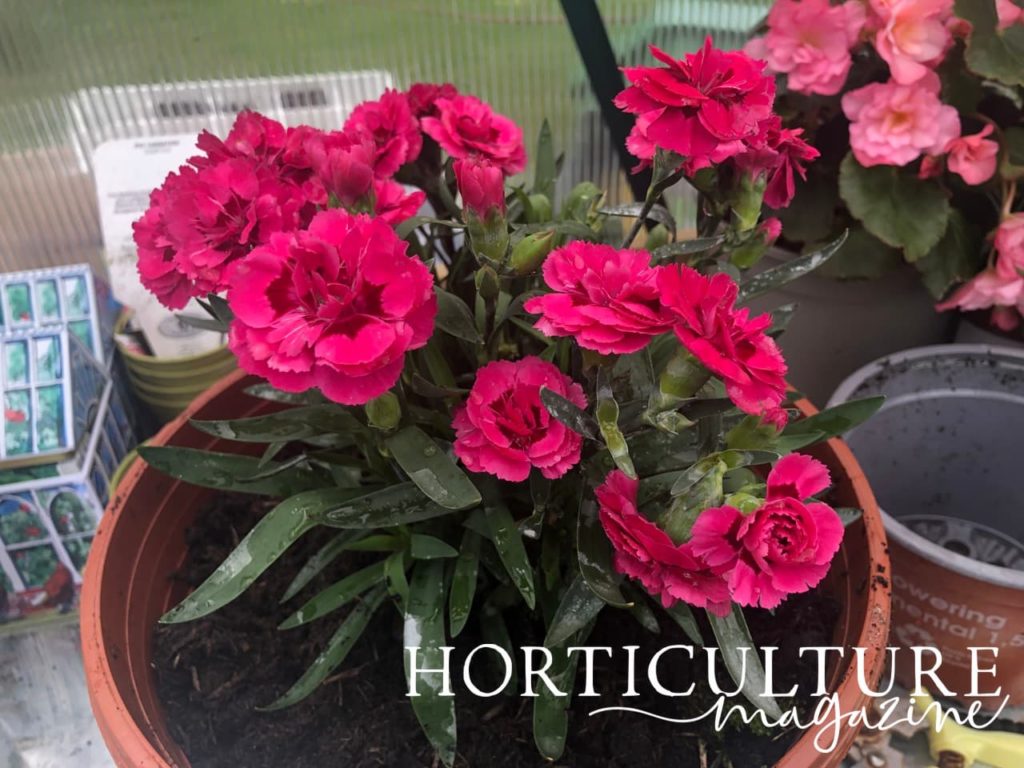
You will usually then plant out your new Dianthus plants into their final growing positions in spring of the following year.
